Related Tags
More unusual cheap guitars that rock stars started their careers on
Very few of us start our guitar journeys on a great guitar, but in the case of these iconic rock stars, their first instruments were downright weird…
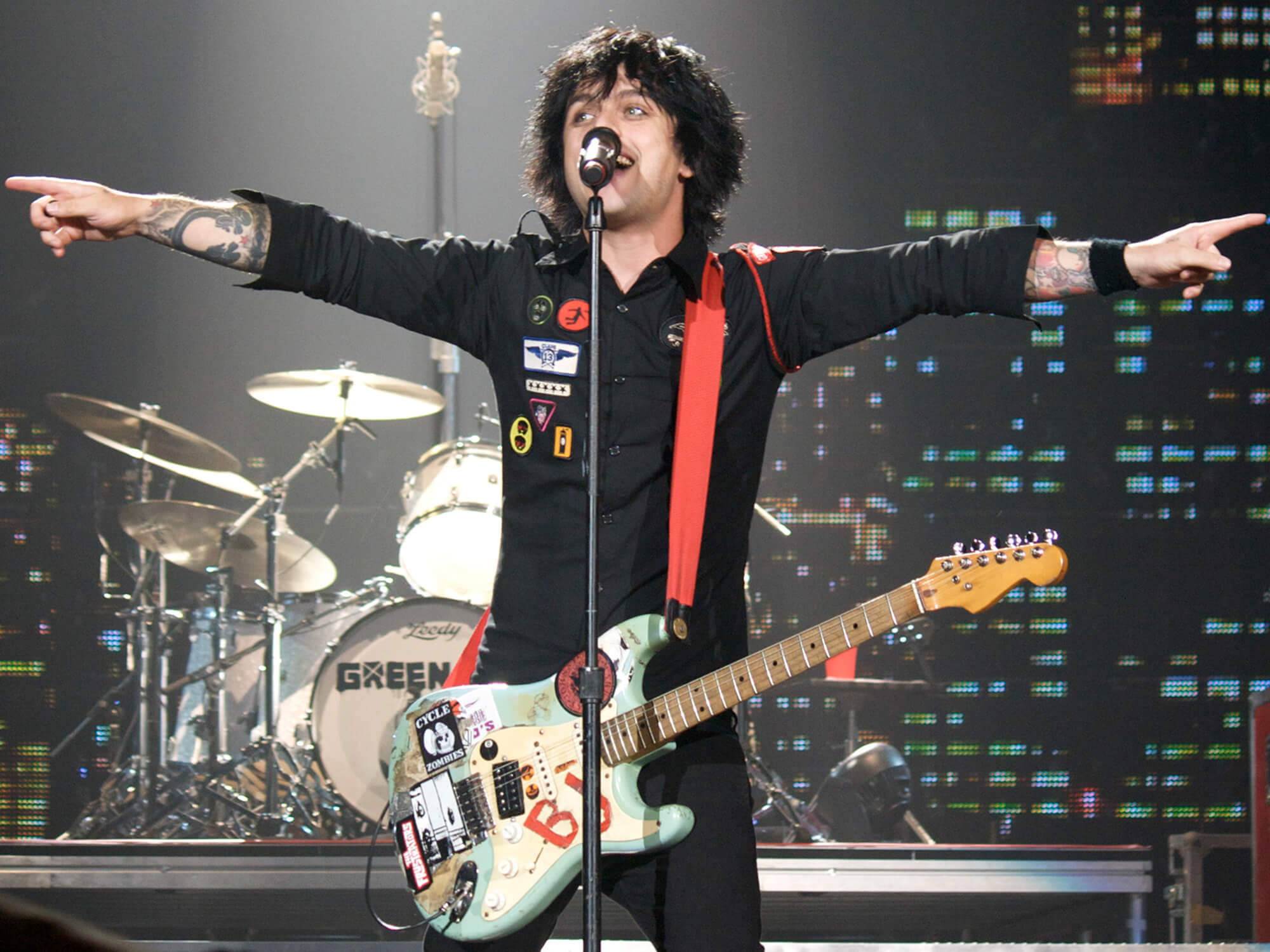
Billie Joe Armstrong performing with ‘Blue’ in 2009. Image: Michael Hurcomb/Corbis via Getty Images
As the saying goes, you always remember your first guitar – even if it’s not very good. A couple of years back we explored some of the cheap and unusual first guitars that a host of legendary icons used to take their first steps into music.
These might not have been the best electric guitars ever made, but there’s no doubt that they got those artists on the road to playing stadiums and selling millions of records, and isn’t that what it’s all about?
But they weren’t the only ones, and in fact a whole bevy of modern guitar icons started playing guitar on instruments that weren’t just cheap – they were positively leftfield. Let’s delve into five more intriguing cases of artists with pretty unusual first guitars…
John Lennon – Gallotone Champion
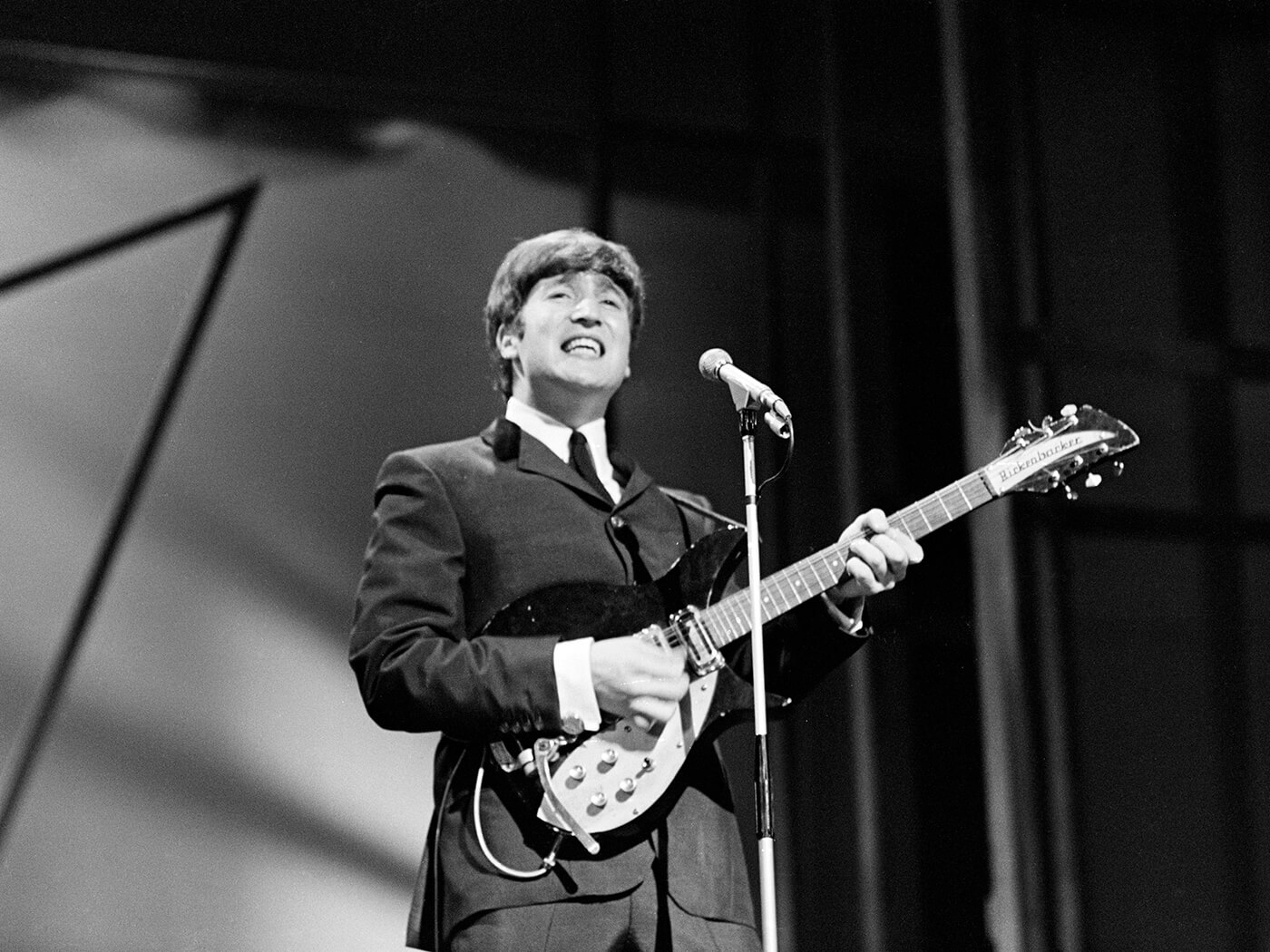
For years, John Lennon’s first guitar was the topic of some debate. Thanks to some relatively recent research, we now know this guitar to be a Gallotone Champion ¾ scale flat-top acoustic guitar that he ordered from Renville Magazine for ten quid. Gallotone guitars were built in the Netherlands but the parent company, Gallo, was based out of South Africa at the time. Gallo was also Africa’s largest record company at the time.
Lennon’s guitar was left with his Aunt Mimi and ultimately landed on an auction block in 1999, where it sold for the sum of $224,000 USD – a percentage of that was donated to the Olive Mount Learning Disabilities Directorate in Liverpool.
At the time of the auction, nobody knew that this was actually Lennon’s first guitar. It was just a guitar that had belonged to Lennon at one point. The guitar was bought by an unnamed New York investment fund manager via telephone in the auction and is believed to still be in his possession, though its status as the guitar that started it all means its now worth a lot more!
Alex Lifeson – 1967 Canora Hollowbody
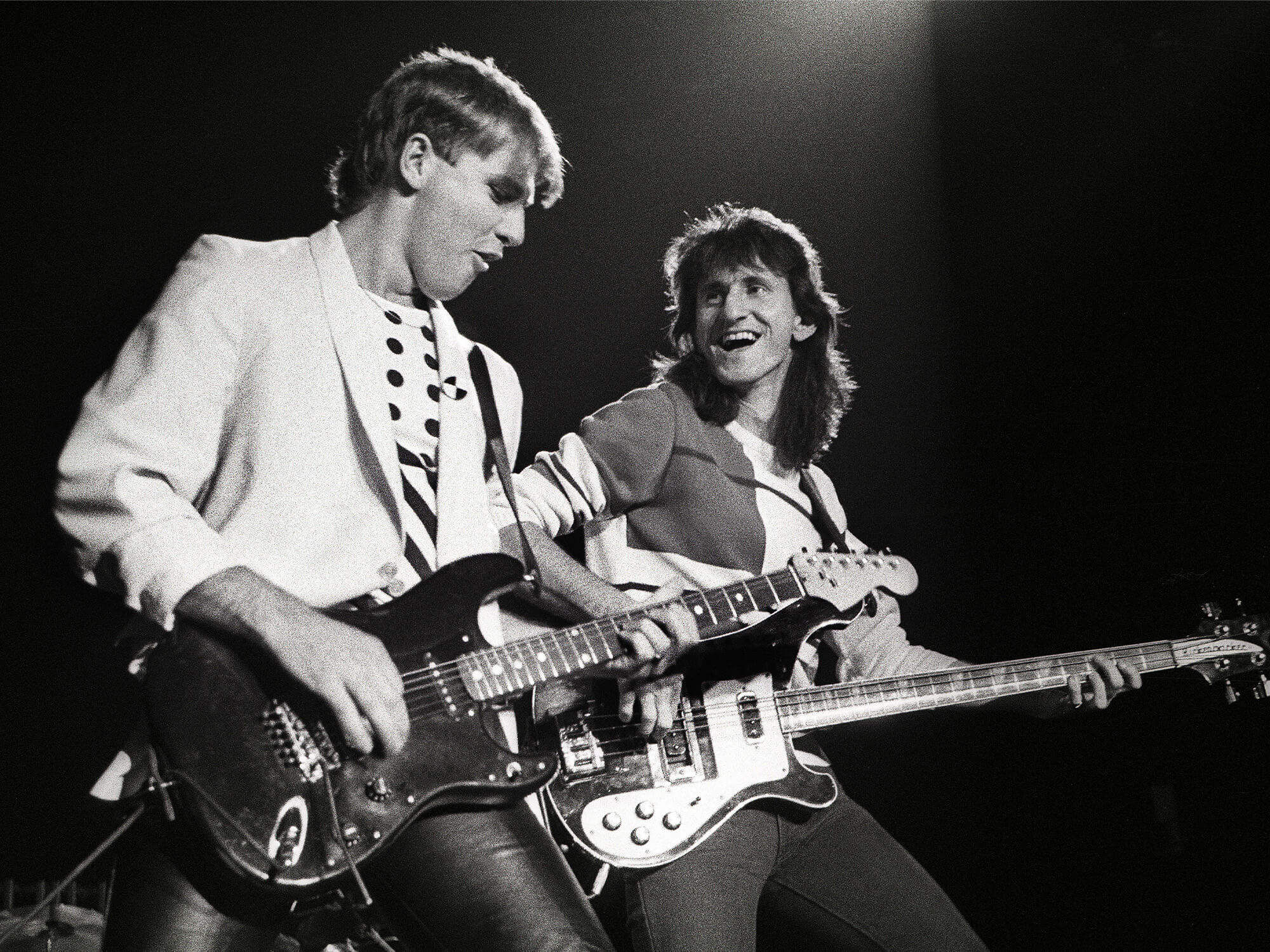
When Alex Lifeson was 13, he received a Christmas gift from his parents that would spark a prolific career in the music business – a guitar. Specifically, a red 1967 Canora hollowbody. Canora guitars were manufactured in Japan and imported to Vancouver, Canada.
They were short-scale, entry-level guitars that were almost exclusively marketed to Canadian conservatories. In fact, when Alex Lifeson and Geddy Lee first started jamming, Lee was also using a Canora bass! The catalogs from that year put the price of the Canora guitars at $59.
Both Lifeson and Lee painted their instruments to resemble the psychedelic guitars used by their heroes in Cream. While Lee’s bass has seemingly been lost to the sand of time, Lifeson’s guitar was recently brought back from its condition as a crudely painted basket case to its former glory by a brilliant Canadian luthier named Garren Dakessian at Oakville, Ontario-based Loucin Guitars. Even as Lifeson auctioned off many of his prized guitars, his first guitar remains in his possession.
Back in 2022 we spoke to Dakessian about how he brought Alex Lifeson’s first guitar back to life – it’s a great story!
Billie Joe Armstrong – Fernandes S-type
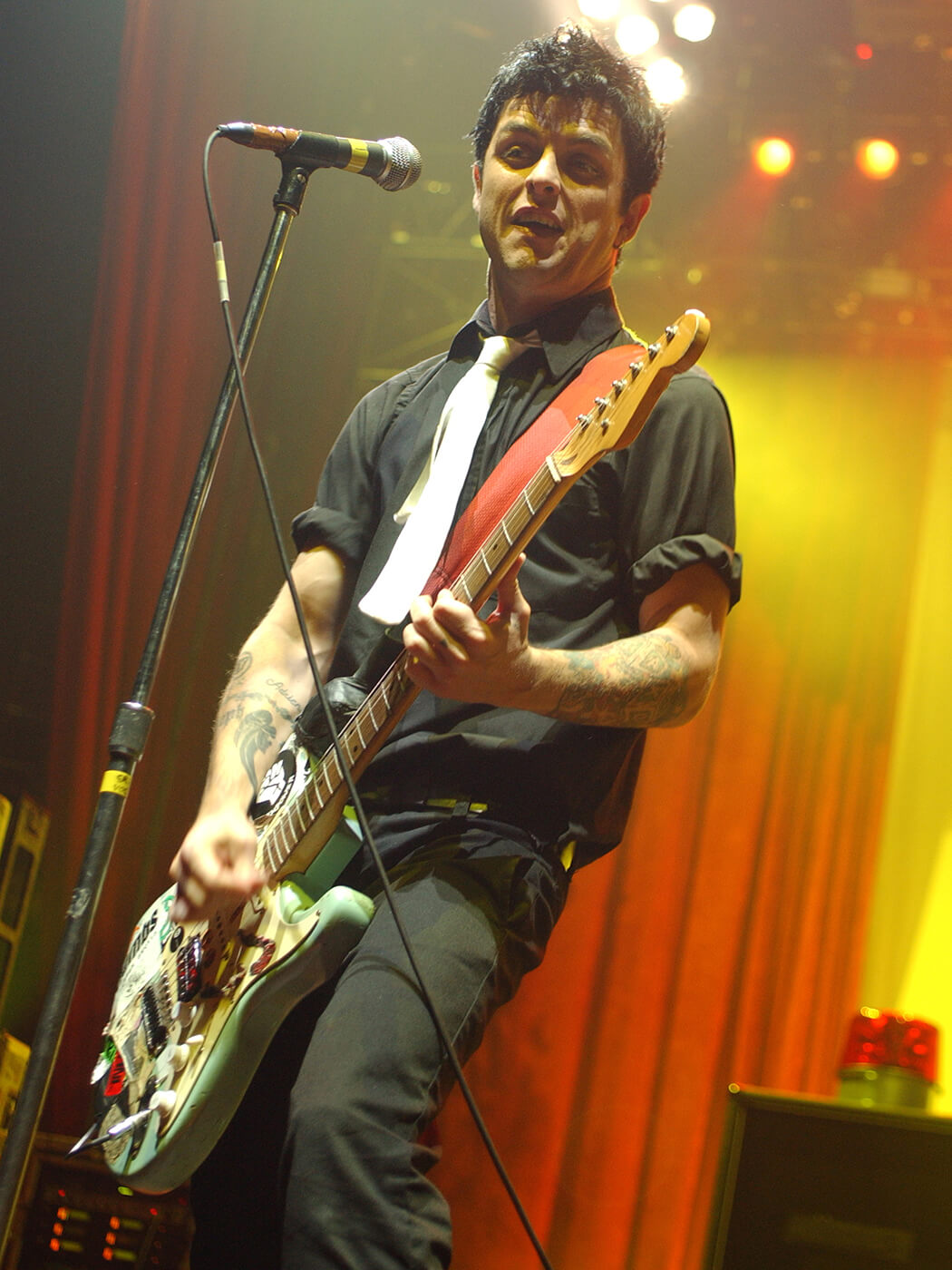
The vast majority of players quickly outgrow their first guitar, but when they instrument is decent and the guitarist is innovative enough, sometimes our first guitar can end up being the one that takes you all the way to the top. Such is the case with Green Day’s Billie Joe Armstrong, who still uses his first guitar to this day.
Billie Joe got the guitar for his 11th birthday, and it’s a decent (if unusual) instrument all-told – a pre-1983 (most likely late 70s) Fernandes Stratocaster copy that is now affectionately known as ‘Blue’. As befits a punk-rocker’s guitar, Blue has seen its way through various modifications over the years, most notably a humbucker pickup being placed in the bridge position. That pickup was installed at a slant much akin to Eddie Van Halen’s Frankenstrat.
Early Fernandes guitars were made of a wood called Silver Heart. It’s not a popular wood in the realm of guitar construction, but it was quite popular in bowling alleys – as such there was a lot of it available to guitar builders after the collapse of the 1960s bowling boom in Japan. In any case, Billie Joe Armstrong still uses Blue to this day – despite many replicas being built to take its place, there’s nothing like the original for him.
Pete Townshend – Hyra Spanish guitar

Pete Townshend smashed his way through many guitars through the years in The Who. But for Townshend, it all started with a £3 Hyra guitar that he got for Christmas in 1956. He got the guitar “from [his] grandmother Denny like those found on the wall in Spanish restaurants.” The guitar was difficult to play, so he set it aside and picked up a banjo for a few years instead – there’s sadly not much information on the history or construction of Hyra guitars out there, but we can assume from the description it was an old-school classical instrument.
Before getting the Hyra, the first guitar Pete Townshend ever played belonged to his uncle Jack, who passed away and left the guitar to Townshend’s mother. That guitar was another unusual one – a 1936 Radiotone cello guitar. Radiotone guitars were made by Höfner for a distributor called J.E. Dallas and Son in Czechoslovakia, and that guitar he did hold onto – for a while at least. It was left to Townshend’s mother, and then sold at auction in 2010 for £7,500.
Townshend told Bonhams auction house, “This was my Uncle Jack’s guitar. He died a few years ago and left this to my mother who gave it to me. This is the first guitar I ever touched, long before I could play. I was between 7 and 10 years old and still trying to learn the chromatic harmonica. Jack lived in a little house in Kingston full of electrical gadgets (he was a Ham Radio expert). He had worked in the war on radar, and also on developing guitar pickups for Gibson.”
Tony Iommi – Watkins Rapier 22
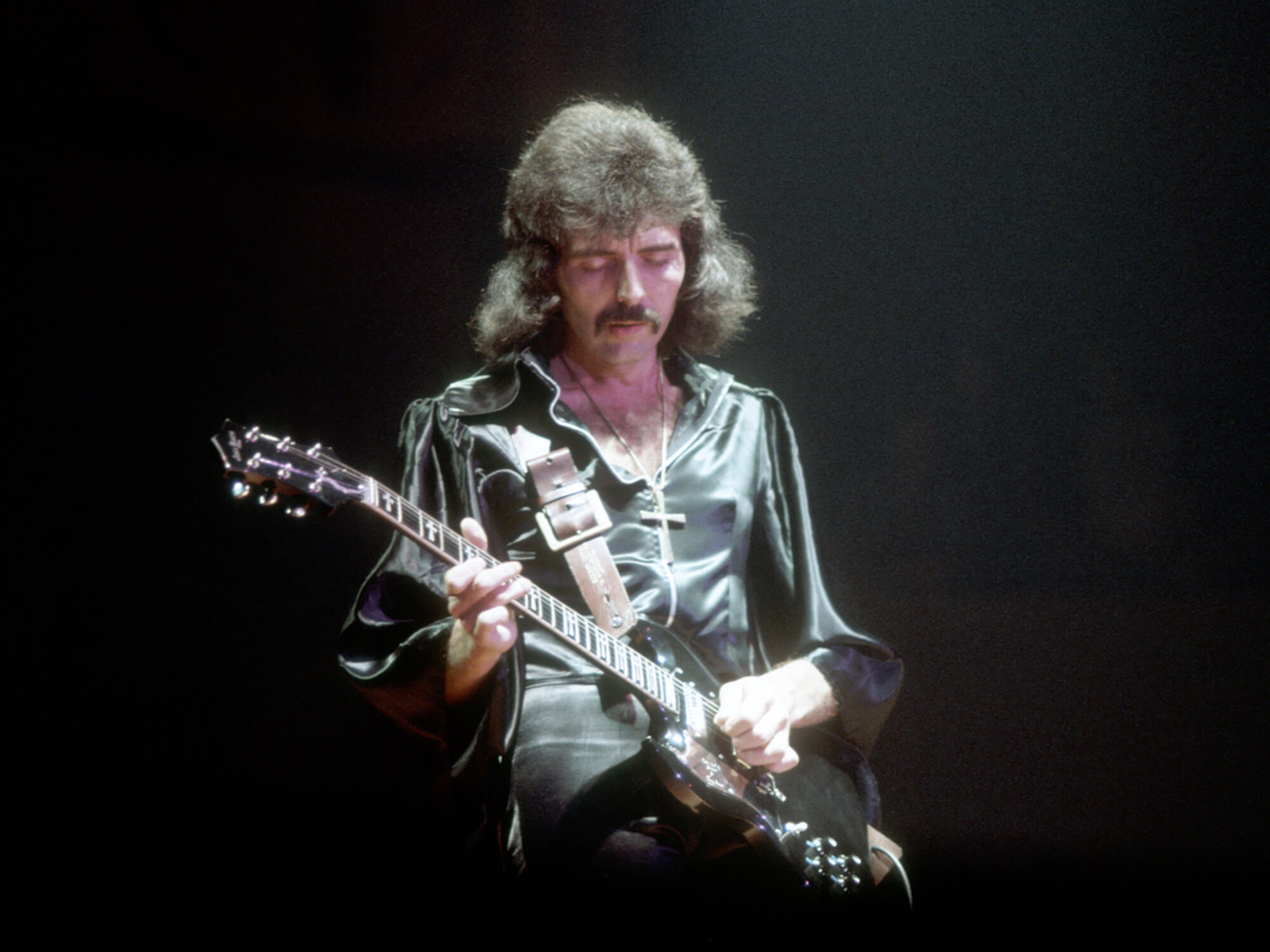
Tony Iommi’s first guitar was a Watkins Rapier 22 from the 1960s. According to his autobiography, it was the only left-handed guitar he could find in the various catalogues that sold guitars at the time. The guitar cost around £20, which was a lot of money for a working class family in Birmingham at the time, so Iommi’s mother bought it for him in weekly instalments
Watkins (later WEM) is primarily famous for being the ‘third’ British amp brand of the 60s and 70s behind Marshall and Vox, but its guitars also have a place in the hearts of many guitar players of this era. At a time when US-imported instruments were expensive and hard to find, your average British guitar player was more likely to be playing something made by European brands like Höfner, Dallas or indeed Watkins.
The 22 was the most basic of the Rapier designs with just two pickups (the 33 had three and the 44 had four!), and a basic vibrato system. Interestingly though, it was not a coincidence that Iommi ended up with a Rapier given that he was left-handed. The struggle for lefty guitarists remains an issue to this day, but the Watkins brothers, who founded the company, apparently ensured that 10% of all Watkins guitars were left-handed – a figure in line with the percentage of southpaws in the world. Many modern brands could learn from this example!
The Rapier has remained something of a footnote in the history of UK electric guitars, but has recently gained more attention thanks to a revival of the instrument (as Rapier Guitars) thanks to veteran Burns guitar designer Robert Entwhistle.
